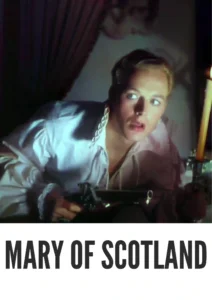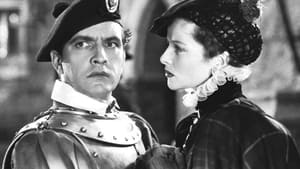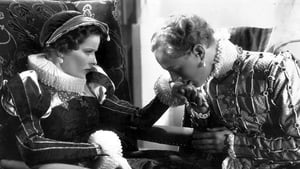Contact: info@alwanfilm.com
Video Sources 0 Views

Synopsis
Mary of Scotland 1936 Colorized Review: A Historical Epic Reimagined in Color

Introduction
Mary of Scotland (1936), directed by the legendary John Ford, is a historical drama that transports audiences to the tumultuous reign of Mary Stuart, Queen of Scots. This film, with its gripping narrative and powerful performances, particularly by Katharine Hepburn as the titular character, has cemented itself as a classic in Hollywood’s Golden Age. Initially released in black and white, Mary of Scotland was later colorized, offering a unique perspective on how historical films can be re-envisioned for contemporary audiences.
In this article, we will explore the intricacies of Mary of Scotland (1936), its iconic cast, the challenges of its colorization, and its enduring influence in both historical cinema and film colorization debates. By diving deep into the themes, performances, and controversies surrounding the film, we hope to offer a comprehensive review of this classic reimagined for modern audiences.
Check The Full Colorized Movies List
Check Our Colorized Movies Trailer Channel
Understanding Mary of Scotland 1936 Colorized: Director, Cast, and Genre
Director’s Vision
John Ford, known for his versatility and expertise in various film genres, brought Mary of Scotland (1936) to life with his unmistakable directorial style. Ford is widely regarded for his Westerns, but with Mary of Scotland, he took a different turn, opting for historical drama instead. His vision was to portray the complexities of Mary Stuart’s life—her ambition, her romantic entanglements, and the political strife she faced.
Ford’s approach to Mary of Scotland was deliberately grand and operatic, emphasizing the emotional struggles of a queen caught between duty and personal desire. His meticulous attention to historical detail, combined with his flair for visual storytelling, made this film not only a character-driven drama but also a sweeping epic that depicted the Scottish and English courts with vivid grandeur.
The Iconic Performance of Actors
The film stars Katharine Hepburn as Mary Stuart, a casting choice that turned out to be a perfect match for the ambitious and tragic character of the Scottish queen. Hepburn’s portrayal of Mary is layered with strength, vulnerability, and regal determination. Her ability to convey Mary’s inner turmoil—her love for Lord Bothwell (played by Fredric March) and her political conflicts with Queen Elizabeth I (portrayed by Florence Eldridge)—is nothing short of brilliant.
Fredric March, as Lord Bothwell, provides a solid counterpart to Hepburn’s Mary, offering a passionate and equally complex character. His chemistry with Hepburn is palpable, making their scenes together some of the most memorable in the film. Eldridge’s portrayal of Elizabeth I, though more understated compared to Hepburn’s fiery Mary, is equally compelling, as she brings out the calculating and shrewd nature of Elizabeth.
Exploring the Genre
Mary of Scotland fits squarely within the genre of historical drama, focusing on real-life figures and events from 16th-century European history. Unlike many other films of the time that romanticized royalty, Mary of Scotland explores the darker side of monarchy—the political betrayals, the power struggles, and the personal sacrifices that come with ruling a nation. The film also delves into themes of love, loyalty, and the tragic fate of those who dare to challenge the established order.
John Ford’s direction brings a sense of epic grandeur to the story, with sweeping landscapes, towering castles, and intense, emotionally charged dialogue. The historical drama genre is further enhanced by the film’s focus on historical accuracy and its attempt to balance personal and political elements, making it a classic within this genre.
Exploring the World of Mary of Scotland 1936 Colorized: Plot and Characters
Detailed Synopsis
Mary of Scotland (1936) chronicles the life of Mary Stuart, the young Queen of Scots who returns to her homeland after the death of her French husband. Upon her return, Mary faces a series of challenges as she struggles to maintain her power in a politically unstable Scotland. The Protestant nobles, led by John Knox (played by Moroni Olsen), oppose Mary’s Catholic faith, and her rule is continually undermined by the English, who support her cousin, Queen Elizabeth I, in her bid to control Scotland.
The film follows Mary’s tragic love story with Lord Bothwell, a Scottish nobleman who becomes her trusted ally and later her husband. Their relationship is complicated by the political upheaval in the kingdom, with Mary’s enemies conspiring to dethrone her. Mary’s desire for peace and unity between Scotland and England is thwarted by internal rebellions and betrayals, culminating in her eventual imprisonment and execution.
Supporting characters like John Knox, Lord Darnley (Mary’s second husband), and the various Scottish nobles add depth to the story, portraying the complex political landscape of the time. Each character plays a significant role in shaping Mary’s fate, making the film as much about the politics of power as it is about personal relationships.
The Art of Film Colorization
Understanding the Process
Film colorization is a technique that has long sparked debate, but in its simplest form, it involves adding color to films that were originally shot in black and white. In the case of Mary of Scotland (1936), the decision to colorize the film was likely motivated by the desire to make this historical drama more visually appealing to modern audiences. The process of colorization requires careful consideration of historical context, costume design, and setting to ensure that the added colors align with the film’s period.
The colorization of Mary of Scotland posed particular challenges due to its historical nature. The filmmakers had to research the color schemes of the period, including royal attire, tapestries, and the natural landscape of Scotland, to create a color palette that felt authentic. This painstaking process aimed to enhance the visual experience without detracting from the film’s original aesthetic.
Development Over Time
Colorization technology has evolved dramatically since its early days. Initially, colorization was done by hand-painting each frame, a laborious and time-consuming process that often led to inconsistent results. However, advancements in digital technology have made the process more precise, allowing for more detailed and historically accurate colorization. Today, software can analyze lighting and shading in the original black-and-white footage to create more realistic color tones, resulting in a more seamless integration of color into older films.
The colorization of Mary of Scotland benefited from these technological advancements, offering a more vivid and immersive viewing experience while maintaining the film’s historical integrity.
Early Colored Films: A Brief History
Emergence of Early Colored Techniques
The history of colored films dates back to the early 20th century, with pioneers experimenting with various techniques to add color to motion pictures. Early methods such as tinting and hand-coloring individual frames were used to bring a sense of vibrancy to certain scenes. These rudimentary methods eventually gave way to more advanced techniques like two-color Technicolor and, later, the full three-strip Technicolor process.
By the time Mary of Scotland was made in 1936, Technicolor had already gained popularity in Hollywood. However, many historical dramas and period pieces were still being shot in black and white, largely due to the high cost of color film. It wasn’t until decades later that filmmakers began colorizing older films as a way to reintroduce them to new audiences.
Mary of Scotland 1936 and Its Early Colored Version
The Decision to Release in Color
The decision to colorize Mary of Scotland was part of a broader trend in Hollywood during the mid-20th century to breathe new life into classic films. The idea was to enhance the visual experience of historical epics like Mary of Scotland by adding color, thereby making them more accessible to audiences who were accustomed to modern color films. By releasing the colorized version, the filmmakers sought to bring a fresh perspective to the film’s elaborate sets, intricate costumes, and sweeping landscapes.
Impact on the Visual Narrative
The colorization of Mary of Scotland adds a layer of visual depth that was missing from the original black-and-white release. The vibrant hues of the Scottish Highlands, the luxurious royal garments, and the opulent interiors of the castles come to life in the colorized version, creating a more immersive experience. However, this visual enhancement also comes with a trade-off. For some viewers, the colorization may detract from the film’s historical authenticity, as the black-and-white aesthetic is often associated with the classic era of cinema.
For others, the colorized version adds a sense of realism to the historical narrative, making it easier to engage with the story. Ultimately, the success of the colorization depends on personal preference, with some audiences embracing the new look while others prefer the original.
The Debate Over Film Colorization
Controversy Surrounding Colorization
Film colorization has long been a subject of controversy in the film industry. Critics argue that colorizing black-and-white films undermines the artistic choices of the original filmmakers, who deliberately chose to shoot in black and white. They claim that the addition of color can alter the mood, tone, and overall impact of a film, potentially diluting its original power.
Supporters of colorization, on the other hand, argue that the process can revitalize classic films and make them more accessible to modern audiences. By updating the visual aesthetic, colorization can attract new viewers who might otherwise be reluctant to watch older black-and-white films. In the case of Mary of Scotland, the colorized version offers an alternative viewing experience that highlights the film’s epic scale and historical significance.
Examining Mary of Scotland 1936 as an Early Colored Film
Enhancement or Distraction?
The colorization of Mary of Scotland raises important questions about how color can enhance or detract from a film’s original experience. On one hand, the colorized version brings out the visual splendor of the film, showcasing the beauty of the Scottish landscapes and the intricate details of the period costumes. This added layer of realism can make the film more engaging for modern audiences, who are accustomed to color films.
On the other hand, the original black-and-white version of Mary of Scotland carries a certain gravitas that is lost in the colorized version. The stark contrasts between light and shadow in the black-and-white film contribute to its dramatic tension and create a timeless, almost mythic quality. For some viewers, the colorization may feel unnecessary or even distracting, as it alters the original atmosphere of the film.
Influence and Legacy: Mary of Scotland 1936 Colorized’s Impact on Cinema
Historical Films and the John Ford Legacy
Mary of Scotland (1936) is part of a long tradition of historical dramas in Hollywood, a genre that has continued to captivate audiences with its blend of history, drama, and spectacle. John Ford’s contribution to this genre cannot be understated. While Ford is best known for his Westerns, his work on Mary of Scotland helped pave the way for other historical epics that followed in its wake, such as The Private Lives of Elizabeth and Essex (1939) and Anne of the Thousand Days (1969).
Ford’s direction of Mary of Scotland also had a lasting impact on the portrayal of powerful female monarchs in cinema. His depiction of Mary Stuart as both a strong and tragic figure set a precedent for future films about female rulers, influencing how filmmakers approached historical narratives centered on women in power.
The Western Remake Trend
Interestingly, while Mary of Scotland is a historical drama, Ford’s signature style as a director of Westerns can still be felt in the film. The sweeping landscapes, the focus on individual characters’ moral dilemmas, and the emphasis on personal honor are all elements that would later be seen in Ford’s Western masterpieces like Stagecoach (1939) and The Searchers (1956). The influence of Mary of Scotland on Ford’s later work demonstrates the interconnectedness of his films, regardless of genre.
Director’s Cinematic Legacy: Beyond Mary of Scotland 1936 Colorized
John Ford’s Influence on Local and International Filmmaking
John Ford’s work on Mary of Scotland solidified his reputation as one of Hollywood’s most versatile and influential directors. While his later Westerns would define his career, his ability to tackle diverse genres, including historical dramas, marked him as a director with a wide-ranging cinematic vision. Ford’s influence extended beyond Hollywood, as filmmakers from around the world looked to his films for inspiration.
International directors like Akira Kurosawa and Sergio Leone have cited Ford as a major influence on their work, particularly in the way he used landscapes and character-driven narratives to tell epic stories. Mary of Scotland, though not as widely known as some of Ford’s other films, contributed to his cinematic legacy and helped shape the future of both historical and Western genres.
Themes Explored in Mary of Scotland 1936 Colorized
Darkness, Violence, and Morality
Mary of Scotland (1936) delves into themes of darkness, violence, and morality, much like the historical dramas and epics that would follow it. The film portrays the often brutal nature of monarchy, where violence and betrayal are common, and moral decisions are never black and white. Mary’s struggle to maintain her power while navigating the treacherous political waters of Scotland and England is at the heart of the film, and her personal sacrifices underscore the darker themes of the story.
The film also explores the theme of loyalty—both personal and political. Mary’s love for Bothwell is tested by her responsibilities as queen, and her loyalty to her people is often at odds with the demands of the English crown. These themes of love, loyalty, and sacrifice give the film emotional depth and make it a timeless story of human struggle.
Reception and Controversy Surrounding Mary of Scotland 1936 Colorized
Critical Reception
When Mary of Scotland (1936) was first released, it received mixed reviews from critics. While Katharine Hepburn’s performance was widely praised, some critics felt that the film’s pacing was slow and that it lacked the excitement and energy of other historical dramas. However, over time, the film has been reevaluated, and it is now considered a classic of the genre.
The colorized version of the film, like many colorized classics, has sparked debate among critics and film historians. Some argue that the addition of color enhances the film’s historical accuracy and visual appeal, while others feel that it detracts from the film’s original aesthetic and mood.
Audience Reactions
For modern audiences, the colorized version of Mary of Scotland offers a fresh way to experience the film. Younger viewers, in particular, may find the colorized version more engaging than the black-and-white original, as it brings the historical settings and costumes to life in a way that feels more contemporary.
However, many purists still prefer the black-and-white version, arguing that the original cinematography, with its use of shadows and lighting, is integral to the film’s dramatic tension. Ultimately, the debate over colorization reflects the broader tension between preserving the artistic integrity of classic films and making them accessible to new audiences.
Where to Watch Mary of Scotland 1936 Colorized Online
For those interested in watching Mary of Scotland (1936), both the original black-and-white version and the colorized version are available on various streaming platforms. Services such as Amazon Prime Video and HBO Max offer access to the film, and it is also available for purchase on DVD and Blu-ray. Additionally, Turner Classic Movies (TCM) often features Mary of Scotland in its lineup of classic films, providing audiences with the opportunity to experience this historical drama in its original format.
FAQs About Mary of Scotland 1936 Colorized
Q: Who played the role of Mary Stuart in Mary of Scotland (1936)?
A: Katharine Hepburn portrayed Mary Stuart in the 1936 film Mary of Scotland, delivering a powerful and nuanced performance that remains one of her most iconic roles.
Q: Was Mary of Scotland originally shot in black and white?
A: Yes, Mary of Scotland was originally shot in black and white. The colorized version was released later, as part of a broader trend of re-releasing classic films in color.
Q: How accurate is Mary of Scotland (1936) in depicting historical events?
A: While Mary of Scotland (1936) takes some artistic liberties with historical events, it remains relatively faithful to the key moments in Mary Stuart’s life. The film focuses on her personal and political struggles, particularly her rivalry with Queen Elizabeth I.
Q: What are the main themes of Mary of Scotland (1936)?
A: The film explores themes of power, betrayal, loyalty, and sacrifice, set against the backdrop of the political turmoil of 16th-century Scotland and England.
Conclusion
Mary of Scotland (1936) is a timeless historical epic that continues to captivate audiences with its dramatic portrayal of one of history’s most tragic queens. John Ford’s direction, combined with Katharine Hepburn’s stellar performance, creates a film that is both emotionally resonant and visually stunning. Whether viewed in its original black-and-white format or the colorized version, Mary of Scotland offers a unique glimpse into the complexities of power, love, and loyalty. The ongoing debate over film colorization only adds to the film’s legacy, as it remains a testament to the enduring appeal of classic cinema.












